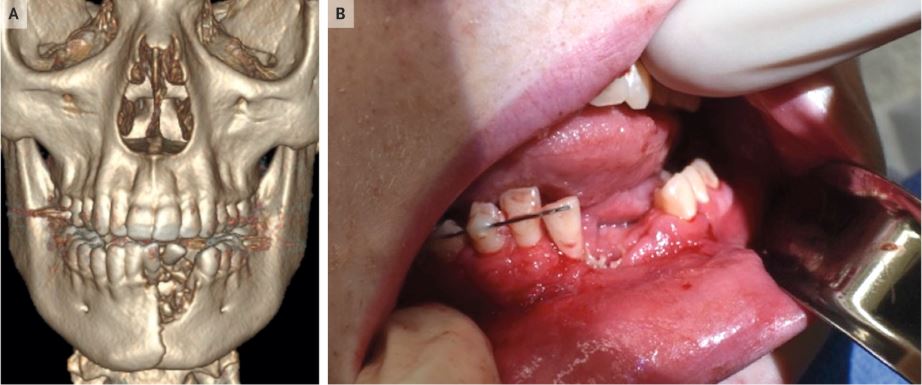E-Cigarette Explodes in Teen's Mouth, Breaks Jaw, Blows Out Teeth

The health hazards of e-cigarettes are still being studied, but one danger seems clear: Sometimes, they explode.
That was the case for a teenage boy who was seriously injured when an e-cigarette exploded in his mouth, breaking his jaw, according to a new report of the case.
The 17-year-old arrived at the emergency room 2 hours after the explosion, according to the report, published today (June 19) in the The New England Journal of Medicine. The patient had extensive wounds to his mouth, several missing teeth and a broken lower jaw, said Dr. Katie Russell, a pediatric trauma surgeon at the University of Utah and Primary Children's Hospital in Salt Lake City, who treated the patient. [27 Oddest Medical Case Reports]
Doctors needed to remove several teeth from the boy's mouth because their sockets had been destroyed, Russell told Live Science. The boy also needed a dental plate put under his lower gums to stabilize his jawbone.
But his mouth still wouldn't close properly, and so doctors wired his jaw shut for six weeks to give it time to heal, Russell said.
Russell and her colleagues wanted to publish this case because they were surprised by the extent of injury that occurred from an e-cigarette, she said.
"When I met this patient, I had no idea that a vape pen could do this. It takes a lot of force to break your jaw," Russell said.
Sign up for the Live Science daily newsletter now
Get the world’s most fascinating discoveries delivered straight to your inbox.
It's now been more than a year since the boy's incident, and during that time, more reports of e-cigarette explosions have come to light. In February, a 24-year-old man in Texas died after a vape pen exploded in his face and tore a major artery in his neck, according to CNN.
E-cigarette explosions appear to be rare, but they are very dangerous, according to the Food and Drug Administration (FDA). The exact cause of these explosions isn't clear. In the boy's case, the device was in good condition and hadn't shown any problems prior to the explosion, Russell said.
Some evidence suggests that issues with the devices' batteries may lead to explosions, the FDA says. To help prevent these explosions, the FDA recommends that users avoid charging their e-cigarette overnight or leaving the device unattended while charging; avoid using cellphone or tablet chargers with the devices; replace vape pen batteries if they get damaged or wet; and protect the device from extreme hot or cold temperatures, such as by not leaving it in direct sunlight or in a cold or hot car for long periods.
The teen boy still has missing teeth, as he has not been able to get replacements due to insurance reasons, Russell said. But he hopes to get new teeth this summer.
Russell hopes the case helps educate health care providers and the public about the risks of these devices. "It seems like this technology really hit the market with force, and we may have been undereducated about the risks associated with these devices."
As for the boy's e-cigarette habit — he's not using them anymore. "He totally quit all cigarettes after this incident," Russell said.
- 9 Odd Ways Your Tech Devices May Injure You
- 10 Facts Every Parent Should Know about Their Teen's Brain
- 12 Amazing Images in Medicine
Originally published on Live Science.

Rachael is a Live Science contributor, and was a former channel editor and senior writer for Live Science between 2010 and 2022. She has a master's degree in journalism from New York University's Science, Health and Environmental Reporting Program. She also holds a B.S. in molecular biology and an M.S. in biology from the University of California, San Diego. Her work has appeared in Scienceline, The Washington Post and Scientific American.









